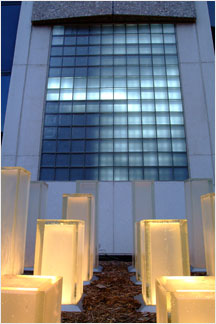Contacts
Rocky Mountain Region Public Buildings Service

An official website of the United States government
Here’s how you know
Official websites use .gov
A .gov website belongs to an official government organization in the United States.
Secure .gov websites use HTTPS
A lock
( )
or https:// means you’ve safely connected to the .gov website. Share sensitive information only on official, secure websites.
 GSA actively strategizes its management of modern buildings built between 1950 and 1979. Making up nearly 50% of its inventory, these properties provide unique and challenging opportunities when planning for the future conservation of these distinctive assets.
GSA actively strategizes its management of modern buildings built between 1950 and 1979. Making up nearly 50% of its inventory, these properties provide unique and challenging opportunities when planning for the future conservation of these distinctive assets.
As part of this effort to better inventory and understand this era of federal construction within its context in American architectural history and the history of federal public building construction, GSA published the study Growth, Efficiency and Modernism: GSA Buildings of the 1950s, 60s, and 70s (GEMbook.pdf 6.1 MB). [PDF - 6 MB]
GSA also developed a tool that assists in determining the eligibility for modern buildings in its portfolio, and can be found within this publication (ToolK.pdf 482 KB) [PDF - 481 KB]. While some of these buildings, such as the Byron Rogers Federal Building/U.S. Courthouse in Denver, Colo., and Mies Van Der Rohe’s Federal Center in Chicago, Illinois, have been determined eligible for the National Register of Historic Places when they reach the 50 year-old threshold, most reflect the era’s focus on efficiency and economy and (are neither exceptional nor likely ever to qualify for listing). We are finding that this isn’t true; instead, there is cause for us to scrutinize those characteristics that cause a building to be eligible for listing.
Byron G. Rogers Federal Building/U.S. Courthouse and Modernism
In early 2000, under its First Impressions initiative to improve public spaces in federal buildings, GSA proposed a renovation project to the 1965 Byron G. Rogers Federal Building and U.S. Courthouse in Denver, Colorado. GSA planned to enhance the building’s entryway and create a new lobby that would alleviate security queuing delays. While the design was underway, word of the project reached the Denver community and local citizens soon vocalized their opposition to changes that they felt compromised the building’s original design.
Coinciding with this community interest was the publication Denver: The Modern City, a book on Denver’s modern architectural heritage that called attention to the building as Denver’s best example of the Formalist style of architecture. This experience enlightened GSA, making it clear that the agency would need to develop a better understanding of its modern-era buildings. More information is available at the Byron G. Rogers Federal Building Case Study [PDF - 580 KB] .
For more information, please contact Andrea Collins at andrea.collins@gsa.gov or 303-236-5374
Rocky Mountain Region Public Buildings Service
Error, The Per Diem API is not responding. Please try again later.
No results could be found for the location you've entered.
Rates for Alaska, Hawaii, and U.S. territories and possessions are set by the Department of Defense.
Rates for foreign countries are set by the Department of State.
Rates are available between 10/1/2022 and 09/30/2025.
The End Date of your trip can not occur before the Start Date.
Traveler reimbursement is based on the location of the work activities and not the accommodations, unless lodging is not available at the work activity, then the agency may authorize the rate where lodging is obtained.
Unless otherwise specified, the per diem locality is defined as "all locations within, or entirely surrounded by, the corporate limits of the key city, including independent entities located within those boundaries."
Per diem localities with county definitions shall include"all locations within, or entirely surrounded by, the corporate limits of the key city as well as the boundaries of the listed counties, including independent entities located within the boundaries of the key city and the listed counties (unless otherwise listed separately)."
When a military installation or Government - related facility(whether or not specifically named) is located partially within more than one city or county boundary, the applicable per diem rate for the entire installation or facility is the higher of the rates which apply to the cities and / or counties, even though part(s) of such activities may be located outside the defined per diem locality.